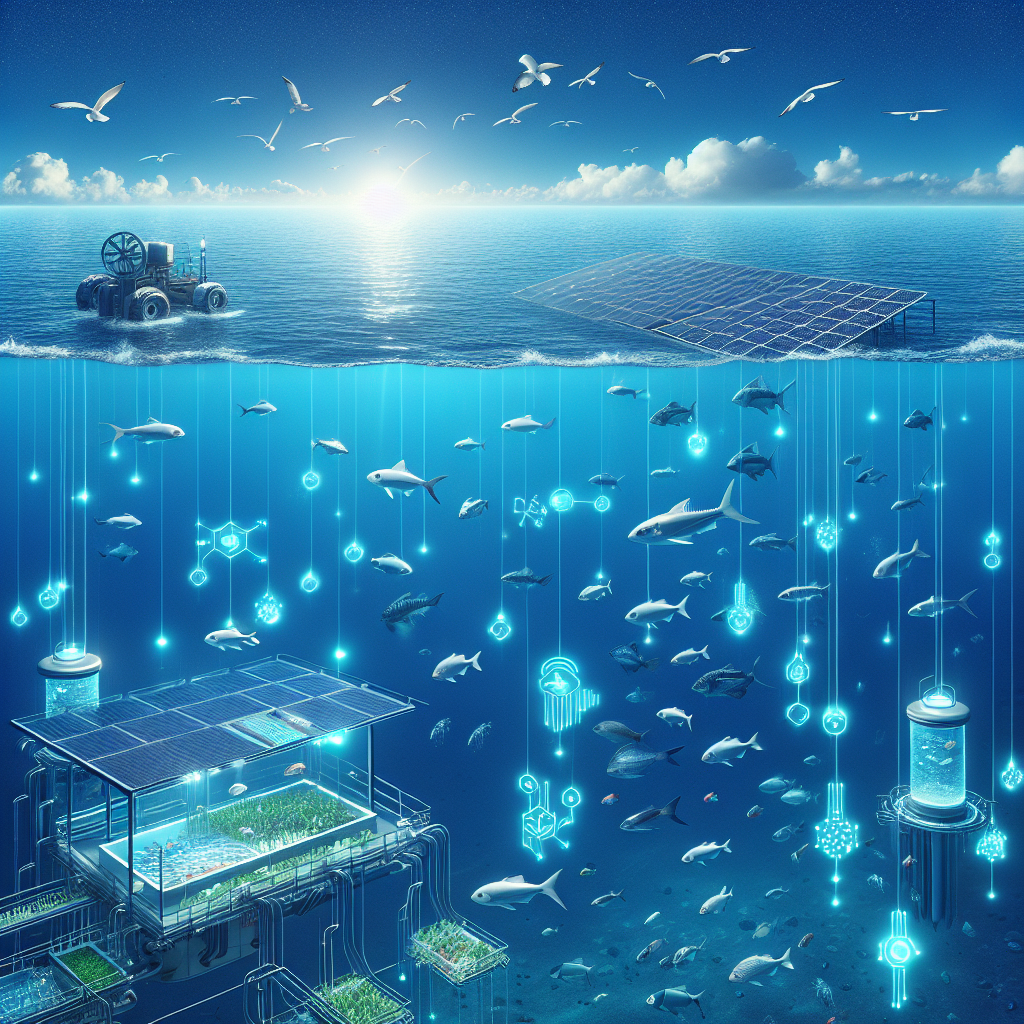AI-powered solutions are revolutionizing the way sustainable seafood production is being managed and optimized. With the growing demand for seafood and the increasing pressure on our oceans, it has become more important than ever to find innovative ways to produce seafood in a sustainable and environmentally friendly manner. AI technology is helping to address these challenges by providing insights, predictions, and recommendations that can help seafood producers make more informed decisions and improve their operations.
One of the key benefits of AI in sustainable seafood production is its ability to analyze vast amounts of data quickly and accurately. This data can include information on water quality, weather conditions, fish health, and feed efficiency, among other things. By analyzing this data, AI can help producers identify patterns, trends, and potential issues that may impact their operations. This can help them make more informed decisions on things like feed management, water quality control, and disease prevention, ultimately leading to more efficient and sustainable production practices.
AI can also be used to optimize feeding schedules and reduce waste in aquaculture operations. By analyzing data on fish behavior, growth rates, and feed conversion ratios, AI can help producers determine the most efficient feeding schedules and quantities to ensure that fish are getting the nutrients they need while minimizing waste. This not only helps to reduce costs for producers but also helps to minimize the environmental impact of aquaculture operations by reducing the amount of excess feed and waste that is produced.
Another application of AI in sustainable seafood production is in monitoring and managing water quality. Water quality is a critical factor in aquaculture operations, as it can impact the health and growth of fish. AI-powered sensors can be used to continuously monitor water quality parameters such as temperature, pH, oxygen levels, and ammonia levels. This data can then be analyzed in real-time to identify any potential issues or trends that may affect fish health. By detecting problems early, producers can take corrective action to prevent issues like disease outbreaks or fish mortality, ultimately leading to more sustainable and profitable operations.
AI can also be used to improve the traceability and transparency of seafood supply chains. By using blockchain technology, AI can help track the journey of seafood from farm to table, providing consumers with information on where their seafood comes from, how it was produced, and its sustainability credentials. This can help to build consumer trust and confidence in the seafood industry, as well as incentivize producers to adopt more sustainable practices in order to meet consumer demand for responsibly sourced seafood.
In addition to these benefits, AI can also help to reduce the environmental impact of seafood production by optimizing energy use, reducing water consumption, and minimizing waste. By analyzing data on energy usage, water usage, and waste production, AI can help producers identify opportunities for improvement and implement more sustainable practices. This can help to reduce the carbon footprint of seafood production and contribute to a more sustainable future for our oceans and planet.
Overall, AI-powered solutions are playing a crucial role in advancing sustainable seafood production by providing producers with the tools and insights they need to optimize their operations, reduce their environmental impact, and meet the growing demand for responsibly sourced seafood. As the seafood industry continues to evolve and face new challenges, AI technology will play an increasingly important role in driving innovation and sustainability in seafood production.
FAQs:
Q: How does AI technology improve the sustainability of seafood production?
A: AI technology improves the sustainability of seafood production by providing producers with insights, predictions, and recommendations that can help them make more informed decisions on things like feed management, water quality control, and disease prevention. This ultimately leads to more efficient and sustainable production practices.
Q: How can AI help to reduce waste in aquaculture operations?
A: AI can help to reduce waste in aquaculture operations by optimizing feeding schedules and quantities, ensuring that fish are getting the nutrients they need while minimizing excess feed and waste. This not only reduces costs for producers but also minimizes the environmental impact of aquaculture operations.
Q: How does AI technology improve traceability in seafood supply chains?
A: AI technology improves traceability in seafood supply chains by using blockchain technology to track the journey of seafood from farm to table. This provides consumers with information on where their seafood comes from, how it was produced, and its sustainability credentials, helping to build consumer trust and confidence in the seafood industry.
Q: What are some of the environmental benefits of using AI in seafood production?
A: Some of the environmental benefits of using AI in seafood production include optimizing energy use, reducing water consumption, and minimizing waste. By analyzing data on energy usage, water usage, and waste production, AI can help producers identify opportunities for improvement and implement more sustainable practices, ultimately reducing the carbon footprint of seafood production.

